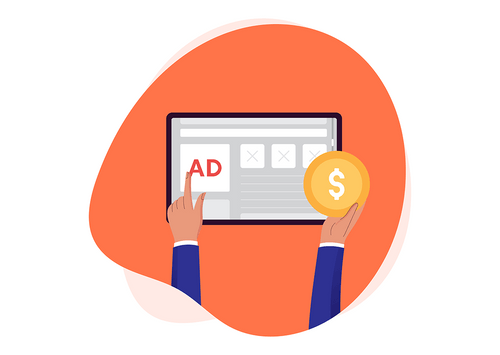
SEO is a valuable tool that can increase online visibility and brand awareness and is part of a smart digital marketing strategy — but SEO is not always a guarantee. You can’t buy or charm your way onto Google’s top organic page results; instead, you must put in the time, create great content, be patient, and have a little bit (or a lot) of luck. This is why it might be wise for your manufacturing business to spend some money on PPC advertising.
Investing in pay-per-click or PPC advertising and creating compelling ads can quickly place your manufacturing business on search results pages (SERPs). But like with all things related to marketing your business online, you must create an effective strategy — and put in the leg work — to have your advertising dollars pay off.
What is PPC Advertising?
Pay-per-click, or PPC, advertising is a different type of search engine optimization that lets you place ads in the list of results for specific keywords in order to drive paid traffic to your website or landing page to generate leads, sales, or another desired outcome from visitors. As the name suggests, you only pay a fee for the ad when a user clicks on it. While you can experiment with placing ads in many places, including on web pages, social media sites like LinkedIn, or search engine results pages, today, we will focus mainly on Google Ads.
What is Google Ads?
Google Ads is an online advertising platform that lets you create and display ads on Google’s search engine results page (SERP) and other Google properties. With Google Ads, you can easily create and target ads to customers actively looking for goods or services associated with your company.
Benefits of PPC and Google Ads
PPC advertising can help you reach a wider audience, gain a competitive advantage, and grow your business. One of the biggest advantages of PPC advertising is that you can create highly targeted ads specific to your products or services and focus on reaching your ideal customers.
PPC advertising can help you broaden your reach and gain a competitive advantage by appearing at the top of search engine results pages. This is especially important for small custom manufacturing businesses, as you may not have the resources to compete with larger, more established players in the market in terms of SEO. But, by using targeted keywords and compelling ad copy, you can ensure that your ads are visible to potential customers looking for your products or services.
9 Steps To Follow To Create an Effective PPC Campaign
PPC advertising can be a powerful way to improve your brand recognition, reach a wider audience, and grow your business — but to be truly effective, it is crucial to understand which keywords to target and how your different buyer personas might search online.
Follow these 9 steps to implement an effective PPC campaign:
1. Identify your target audience: Determine your ideal customers and what keywords they might use to search for your products or services.
2. Set your goals: Determine what you want to achieve with your ads, such as driving website traffic, generating leads, or increasing sales.
3. Choose your campaign type: Select the campaign type that best aligns with your goals, such as search ads, display ads, or video ads.
4. Create your ad groups: Create ad groups organized by theme or keyword within your campaign. This will help you create more relevant ads that resonate with your target audience.
5. Craft compelling ad copy: Write engaging ad copy with a clear value proposition and a strong call-to-action. This will help your ads stand out and encourage users to click through to your website.
6. Set your budget and bidding strategy: Determine how much you want to spend on your ads and choose a bidding strategy that aligns with your goals.
7. Launch your campaign: Once you’ve created your ads, set your budget and bidding strategy, and completed your targeting, launch your campaign.
8. Monitor your performance: Use Google Ads’ reporting and analytics tools to track your performance and adjust as needed. This can include changing your targeting, bidding strategy, ad copy, and budget to improve your results.
8. Continuously optimize your campaign: As you gather more data on your campaign’s performance, make ongoing optimizations to improve your results. This includes testing new ad copy, targeting options, and bidding strategies.
Overall, PPC Advertising and Google Ads are powerful tools to help you reach potential customers at the exact moment they are searching for products or services related to your business and to drive targeted traffic to your website.
Stay tuned for the next installment in our Marketing for Manufacturing series, where we will share 10 tips to revamp your website to make it more effective.
Get your eBook Scared to implement a new ERP?
"*" indicates required fields



